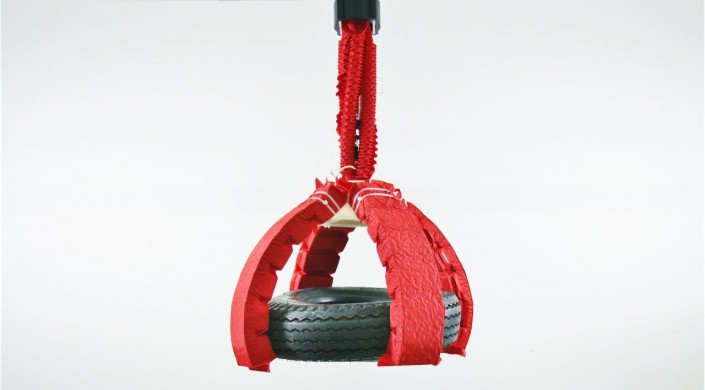Researchers at the Harvard John A. Paulson, the Wyss Institute at Harvard University and MIT have created origami-inspired artificial muscles that add strength to soft robots.
Such muscles allow them to lift objects that are up to 1,000 times their own weight using only air or water pressure. The study will be published in Proceedings of the National Academy of Sciences (PNAS).
The structure within
Each artificial muscle consists of an inner skeleton.
Materials such as a metal coil or a sheet of plastic folded into a pattern can form this skeleton.
Air or fluid surrounds such pattern and seals it inside a plastic or textile bag that serves as the skin.
A vacuum applied to the inside of the bag initiates the muscle’s movement.
The skin collapses onto the skeleton and, therefore, creates tension that drives the motion.
The direction of the muscle’s movement does not require other power sources or human input; the shape and composition of the skeleton determines it in its entirety.
The muscles are very compact and, thus, more appropriate for mobile systems that cannot accommodate large or heavy machinery.

The team constructed dozens of muscles using materials ranging from metal springs to packing foam to sheets of plastic.
They also experimented with different skeleton shapes to create muscles that can contract down to 10% of their size, lift a flower off the ground, or twist into a coil.
The artificial muscles’ superpowers
Not only can the artificial muscles move in many ways, they do so with resilience.
They can generate six times more force per unit area than mammalian skeletal muscle can.
They are also lightweight: a 2.6g muscle can lift a 3kg object.
Additionally, materials that cost less than $1 can build a single muscle within ten minutes, making them cheap and easy to test and iterate.
A vacuum is able to power these muscles, a feature that makes them safer than most of the other artificial muscles.
This feature means that the muscles can be applied to numerous applications at multiple scales.
These applications include miniature surgical devices, wearable robotic exoskeletons, transformable architecture, deep-sea manipulators for research or construction, and large deployable structures for space exploration.
The team was able to construct the muscles out of polymer PVA, which opens the possibility of robots that can perform tasks in natural settings with minimal environmental impact.
It also means that ingestible robots can move to the proper place in the body and then dissolve to release a drug.
The DARPA, the NSF, and the Wyss Institute for Biologically Inspired Engineering funded this research.

